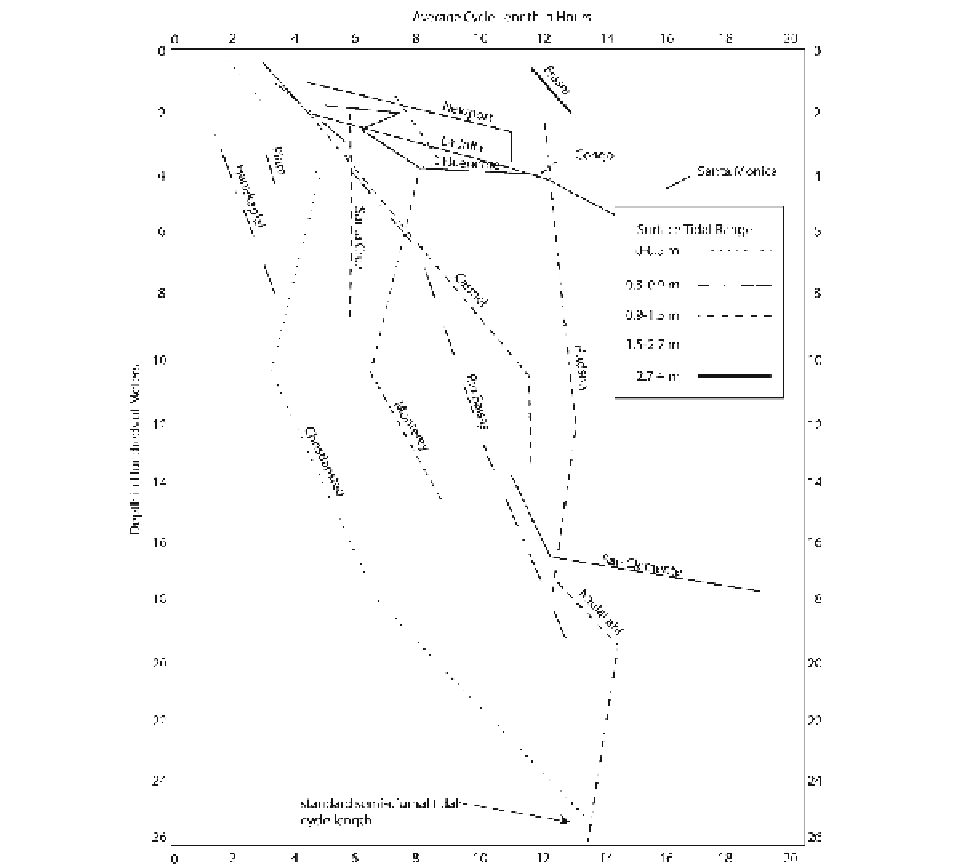Geology Reference
In-Depth Information
Fig. 14.1
Depth versus cycle length plot for a number of
submarine canyons, showing the increasing cycle length vs
depth trend typical of the canyons. With increasing tidal range,
the cycle length more closely approximates the semidiurnal tidal
cycle at shallower depths (Modifi ed from Shepard et al.
1979
)
waves coincided with those of the diurnal or semidiurnal
tides (LaFond
1962
). This work was followed up in the
1960s and 1970s by groups at Scripps Institution of
Oceanography (Lonsdale et al.
1972
; Shepard
1976
;
Shepard et al.
1979
) who demonstrated through many
measurements in a number of different submarine can-
yons and on seamounts that internal tides do occur, but
are generally only present in water depths exceeding
about 250 m. In addition, they found an inverse corre-
lation between surface tidal range, and the minimum
depth below the surface at which internal tides match
frequency with surface tides (Fig.
14.1
). Above this
minimum depth, internal wave periods exhibit a higher
frequency than the surface tides, presumably due to
interference from other external factors (e.g. wind
currents, river plumes, longshore currents, etc.). These
measurements showed that the velocities of tidal cur-
rents in submarine canyons for outlier events can exceed
250 cm/s down-canyon, and 110 cm/s up-canyon,
although on a daily basis are typically in the range of
10-50 cm/s, both up and down-canyon (Shepard and
Marshall
1973
; Zhenzhong et al.
1998
) . Even within

